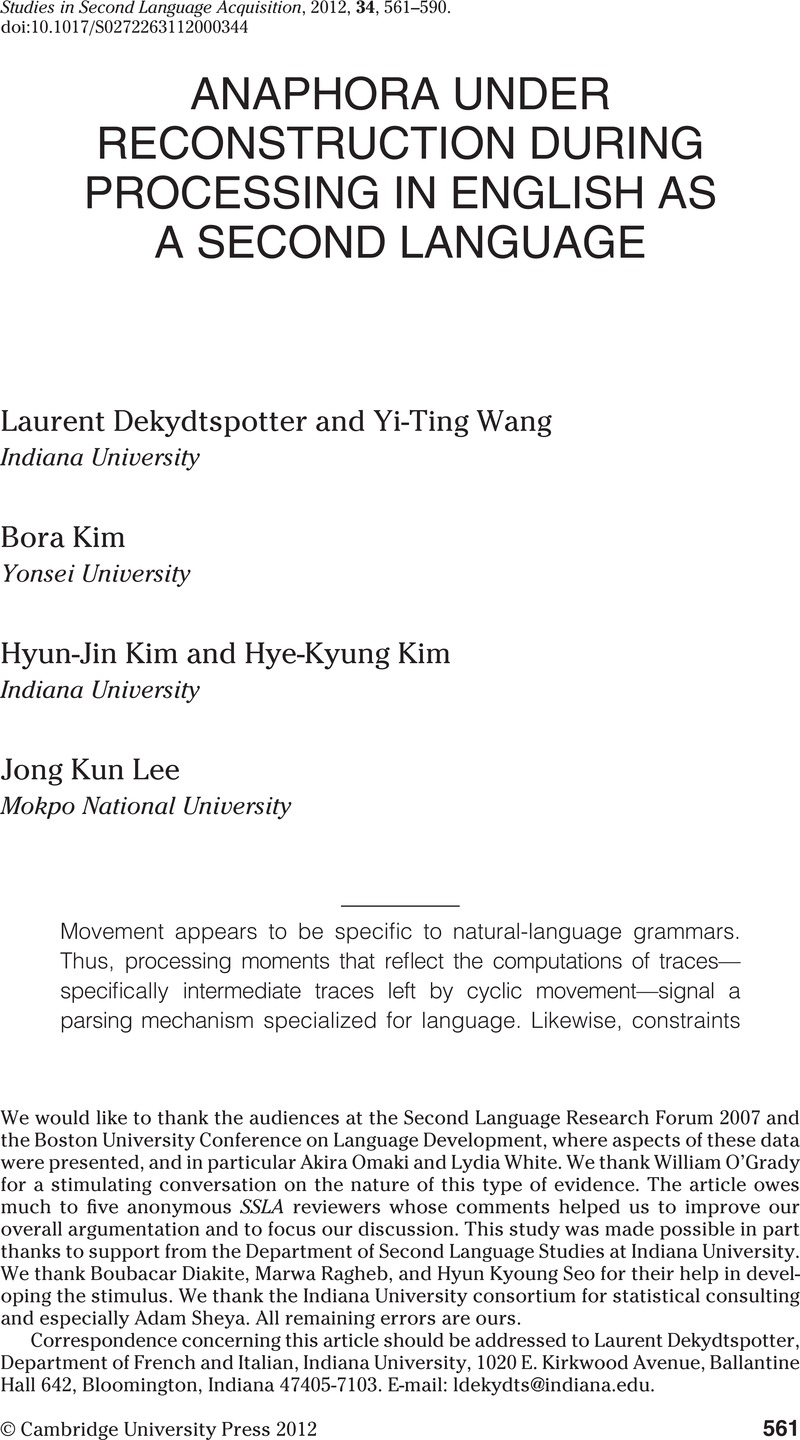Crossref Citations
This article has been cited by the following publications. This list is generated based on data provided by Crossref.
Slabakova, Roumyana
2013.
Adult second language acquisition.
Linguistic Approaches to Bilingualism,
Vol. 3,
Issue. 1,
p.
48.
Dekydtspotter, Laurent
and
Renaud, Claire
2014.
On second language processing and grammatical development.
Linguistic Approaches to Bilingualism,
Vol. 4,
Issue. 2,
p.
131.
Sperlich, Darcy
2020.
Reflexive Pronouns: A Theoretical and Experimental Synthesis.
Vol. 8,
Issue. ,
p.
21.
Dekydtspotter, Laurent
Miller, A. Kate
Iverson, Mike
Xiong, Yanyu
Swanson, Kyle
Gilbert, Charlène
and
Franck, Julie
2023.
The timing versus resource problem in nonnative sentence processing: Evidence from a time-frequency analysis of anaphora resolution in successive wh-movement in native and nonnative speakers of French.
PLOS ONE,
Vol. 18,
Issue. 1,
p.
e0275305.
Dekydtspotter, Laurent
Miller, A. Kate
Swanson, Kyle
Cha, Jih-Ho
Xiong, Yanyu
Ahn, Jae-Hyun
Gilbert, Jane A.
Pope, Decker
Iverson, Mike
and
Meinert, Kent
2024.
Hierarchical neural processing in γ oscillations for syntactic and semantic operations accounts for first- and second-language epistemology.
Frontiers in Human Neuroscience,
Vol. 18,
Issue. ,



